As an Australian, I’m afflicted with two things:
- Living in a deadly paradise full of Drop Bears, Hoop Snakes and Cassowaries. Only one of these is fake.
- Terrible internet, crippled by the ridiculous decisions of multiple corrupt governments.
They installed “Fibre to the Node”, or VDSL. The technology that New Zealand had had for decades and nobody in their right mind would deploy these days.
Second-generation systems (VDSL2; ITU-T G.993.2 approved in February 2006)[5] use frequencies of up to 30 MHz to provide data rates exceeding 100 Mbit/s simultaneously in both the upstream and downstream directions. The maximum available bit rate is achieved at a range of about 300 metres performance degrades as the local loop attenuation increases.
VDSL2 permits the transmission of asymmetric and symmetric aggregate data rates up to 300+ Mbit/s downstream and upstream on twisted pairs using a bandwidth up to 35 MHz. It deteriorates quickly from a theoretical maximum of 350 Mbit/s at source to 100 Mbit/s at 500m (1640.42ft) and 50 Mbit/s at 1000m (3280.84ft), but degrades at a much slower rate from there, and outperforms VDSL. Starting from 1,600 m (1 mi) its performance is equal to ADSL2+.
So… they spent how much to double my speed, when they could have given me 100x on fibre?
From this 2017 article in lifehacker it cost $2172 per greenfield premises served to install FTTN, and being a “brownfield” premises the costs were likely higher.
That’s ignoring the significantly higher costs of running the 100’s more FTTN nodes, cabinets, batteries etc. NBNCo, Turnbull, everyone involved in this process, has made criminal mismanagement of taxpayer money their stock and trade.
FTTP, sweet fibre, all the way to my door, delivering gigabit speeds… would have cost $4k for a “brownfield site” install. Their “technology choice” program quoted me “between $10-13,000” to upgrade to the speeds that the NBN was promising we’d all have.
tl;dr
1100m of copper goes from my townhouse complex and out the street… past the FTTN node, out to a distribution pole on a main road, then back to the node. This turns my broadband into snore-band.
Timeline
On 2018-02-06 I signed up to migrate with Internode as I’d been sent things saying “NBN was coming soon” - they quoted “about 12 months” (Three years, six months ago…)
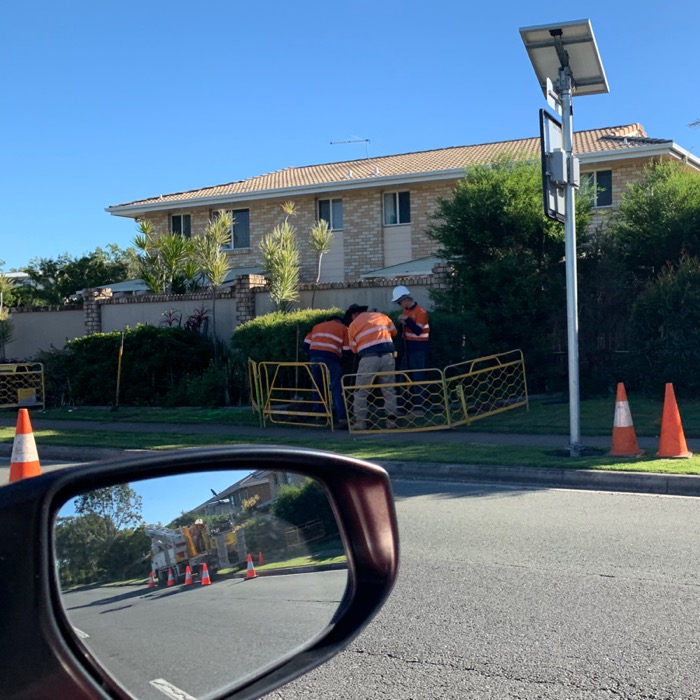
2019-05-28 They started digging a hole... I took this photo out of pure joy - surely I'd have some internet soon!
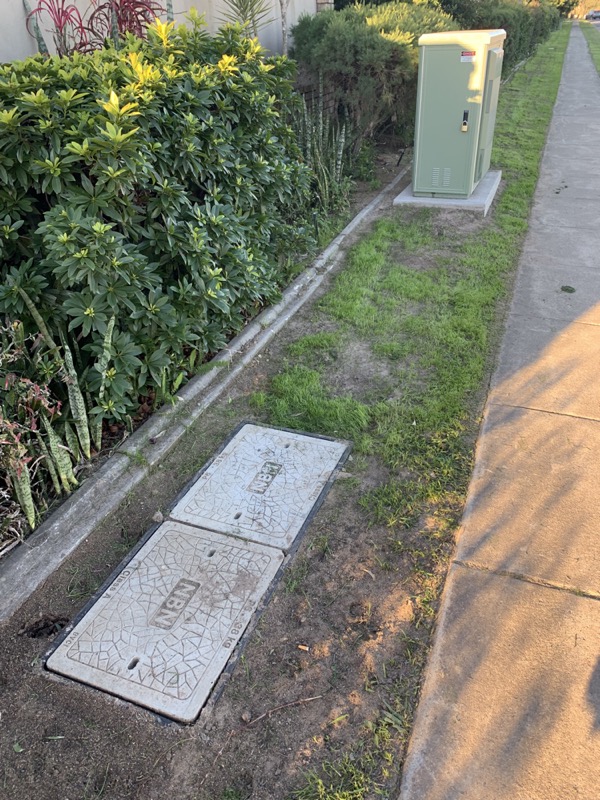
2019-07-14 When I took this photo, they'd just dug a pit for the fibre to run through...
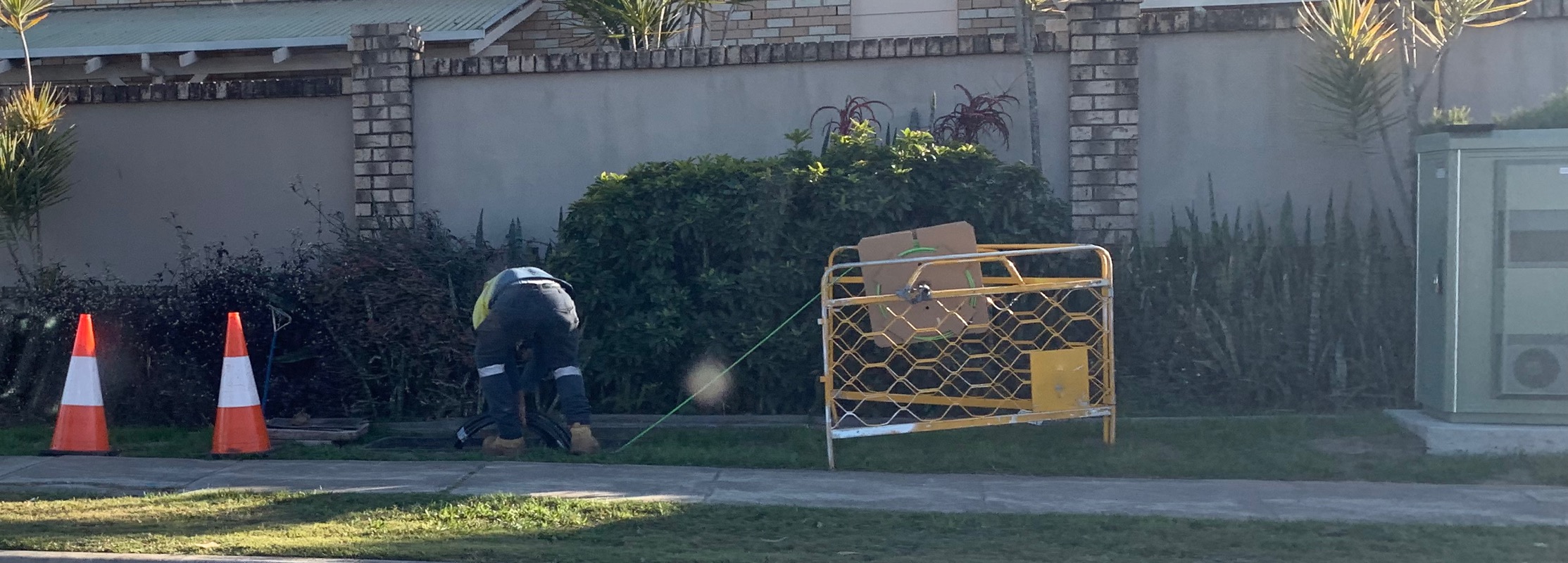
2019-08-20 - I was so excited. Surely with them running fibre, I'd have internet soon!
2020-02-22, “NBN is available in your area” and my order is live.
2020-03-02 I got the “It’s ready to use!” email. At this point… I was so excited! I could upgrade from my ~14mbit down, 1mbit up to 100/40!
It’d been 755 days of “coming soon” at that point.
2020-03-03 I started logging tickets reporting speed problems. I was getting ~37/10. 1 year, five months ago.
Over the next month or two I fought with NBNCo (through my ISP) to acknowledge it was a broken deployment and do something. I replaced all the wiring in my house, scraping some speed back by removing about ~50m of crappy old phone line and replacing it with shiny new infrastructure-grade Cat6a.
Testing from the boundary point (the first point in the line where I can access it) was no better, so it wasn’t my house wiring causing the actual problem.
Since it didn’t drop out constantly and it was over 25mbit, they weren’t interested. I got a refund on my install fees and hardware costs as they’d well and truly overcharged me for the connection, and I moved to Aussie Broadband on a 50/20mbit plan. Sigh.
Some location photos
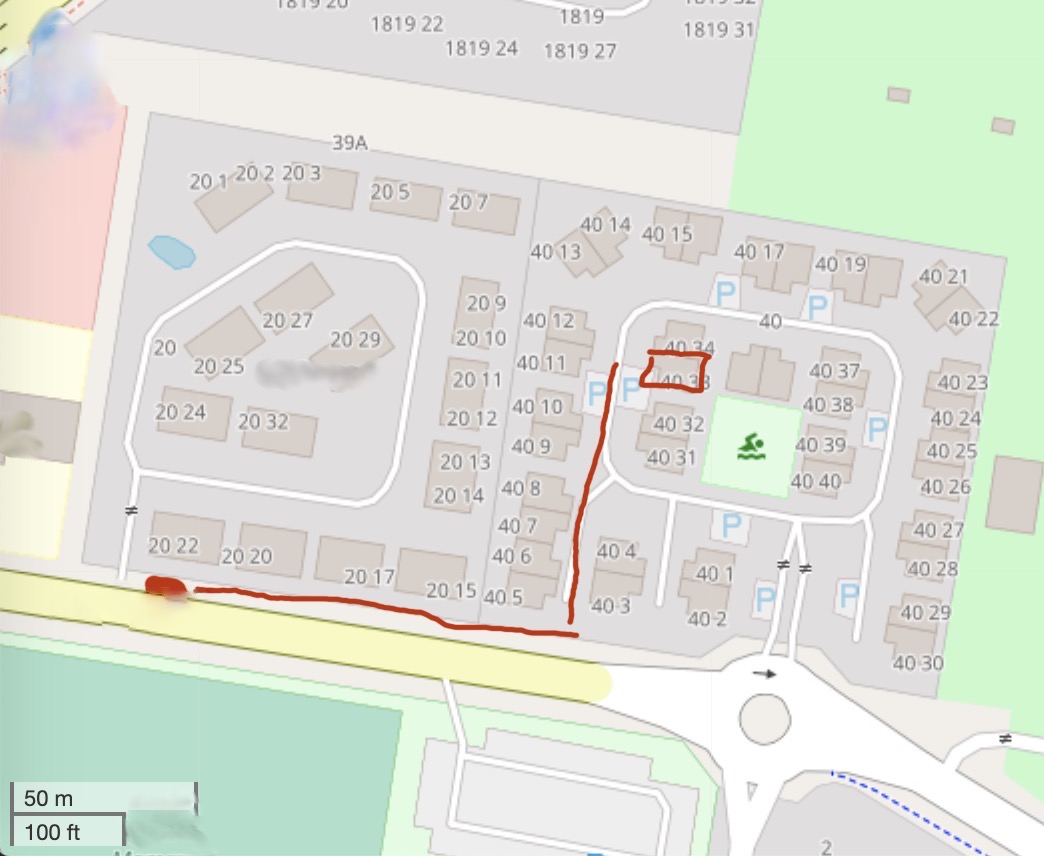
The box is my house, red blob is where the NBN cabinet is.
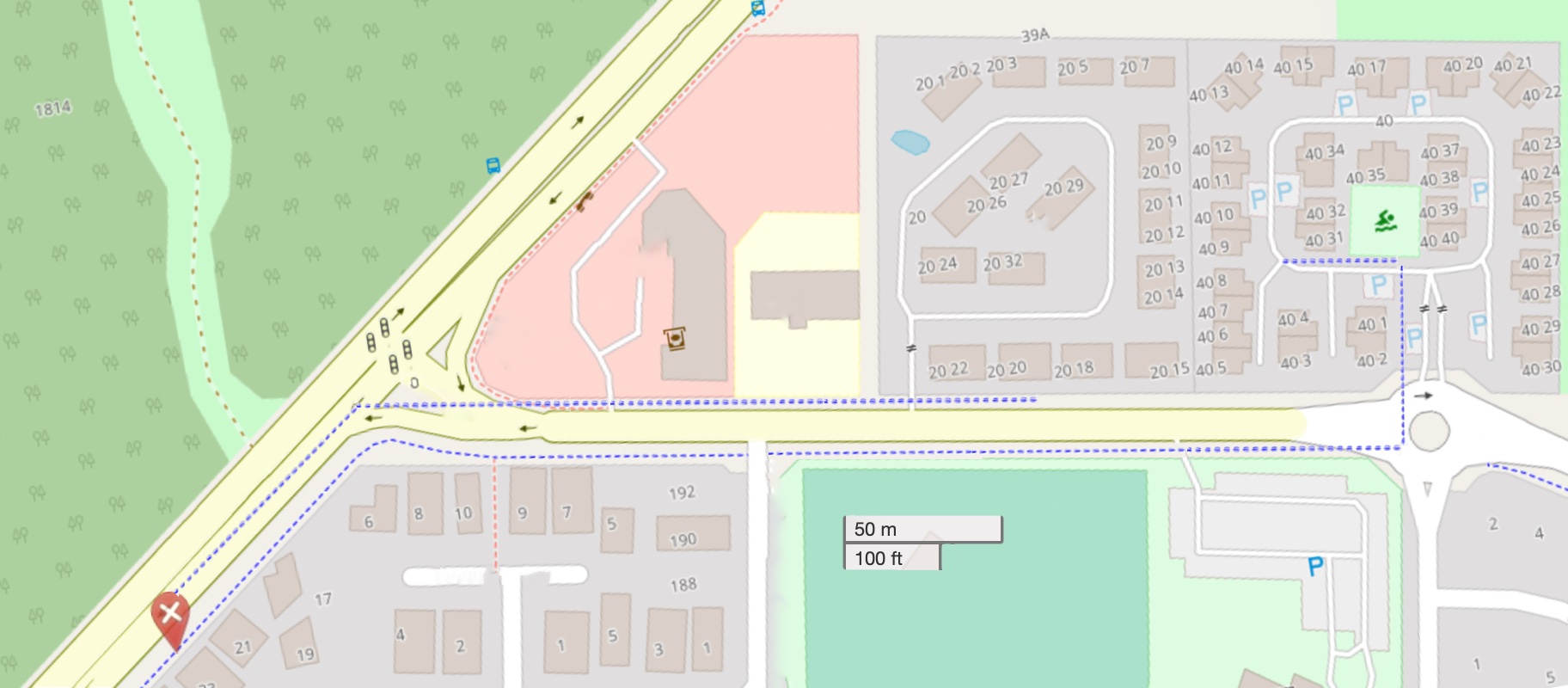
The map of shame. For reference, my street is 350m long from the intersection to the roundabout. The blue dotted line is where the copper runs.
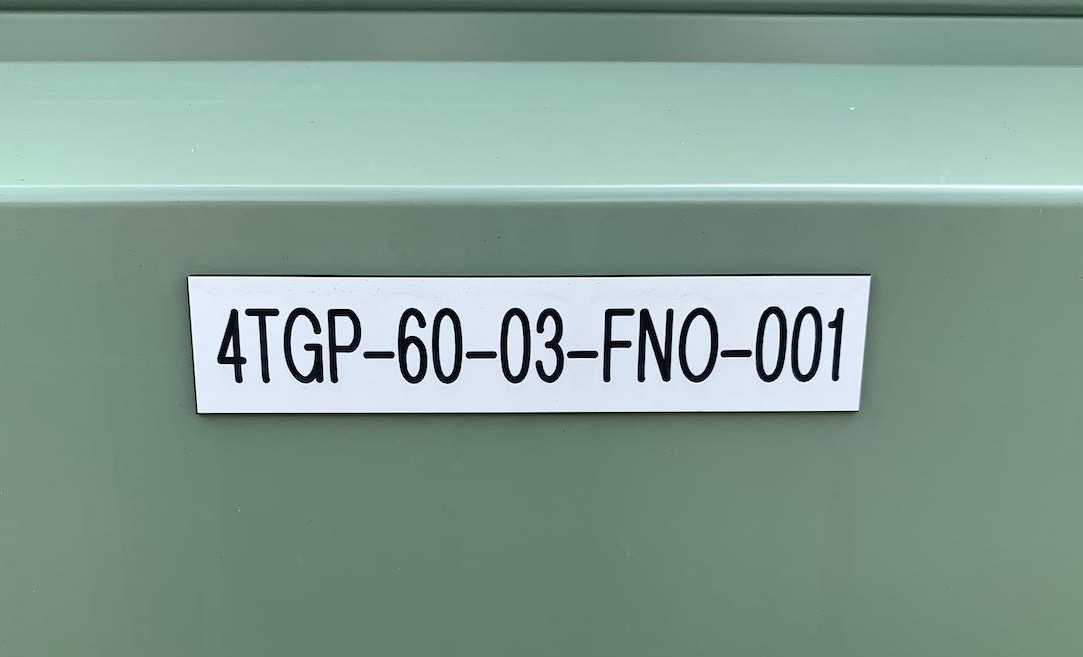
The ID on the box is '4TGP-60-03-FNO-001'
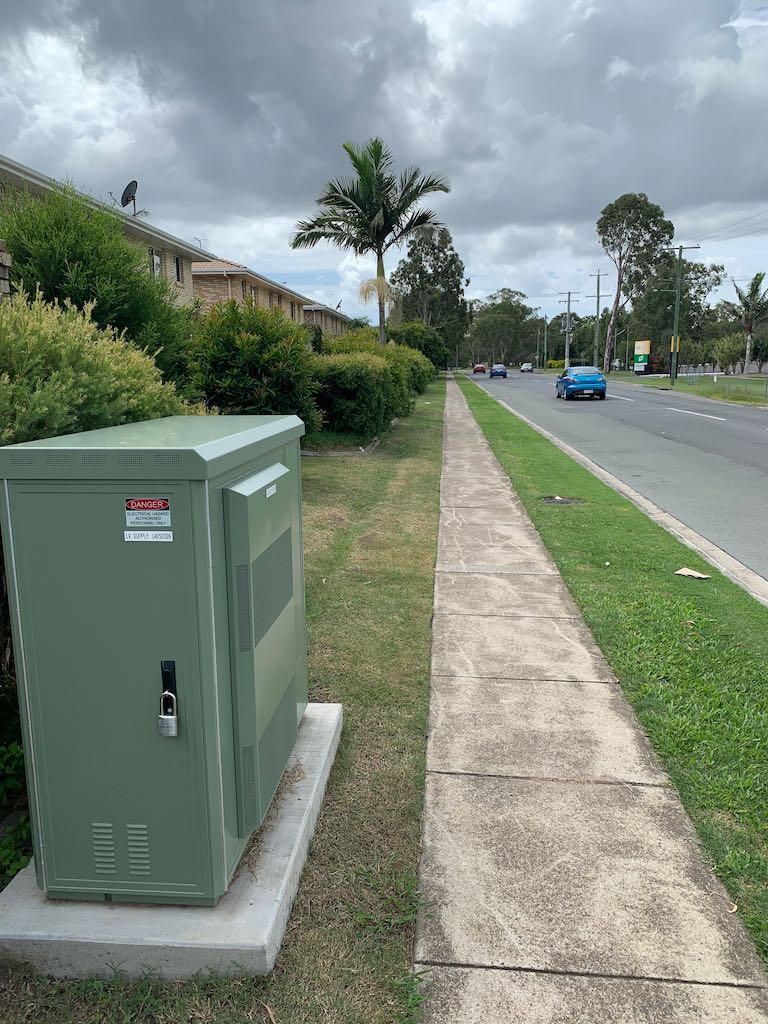
From the node to my complex - right next door.
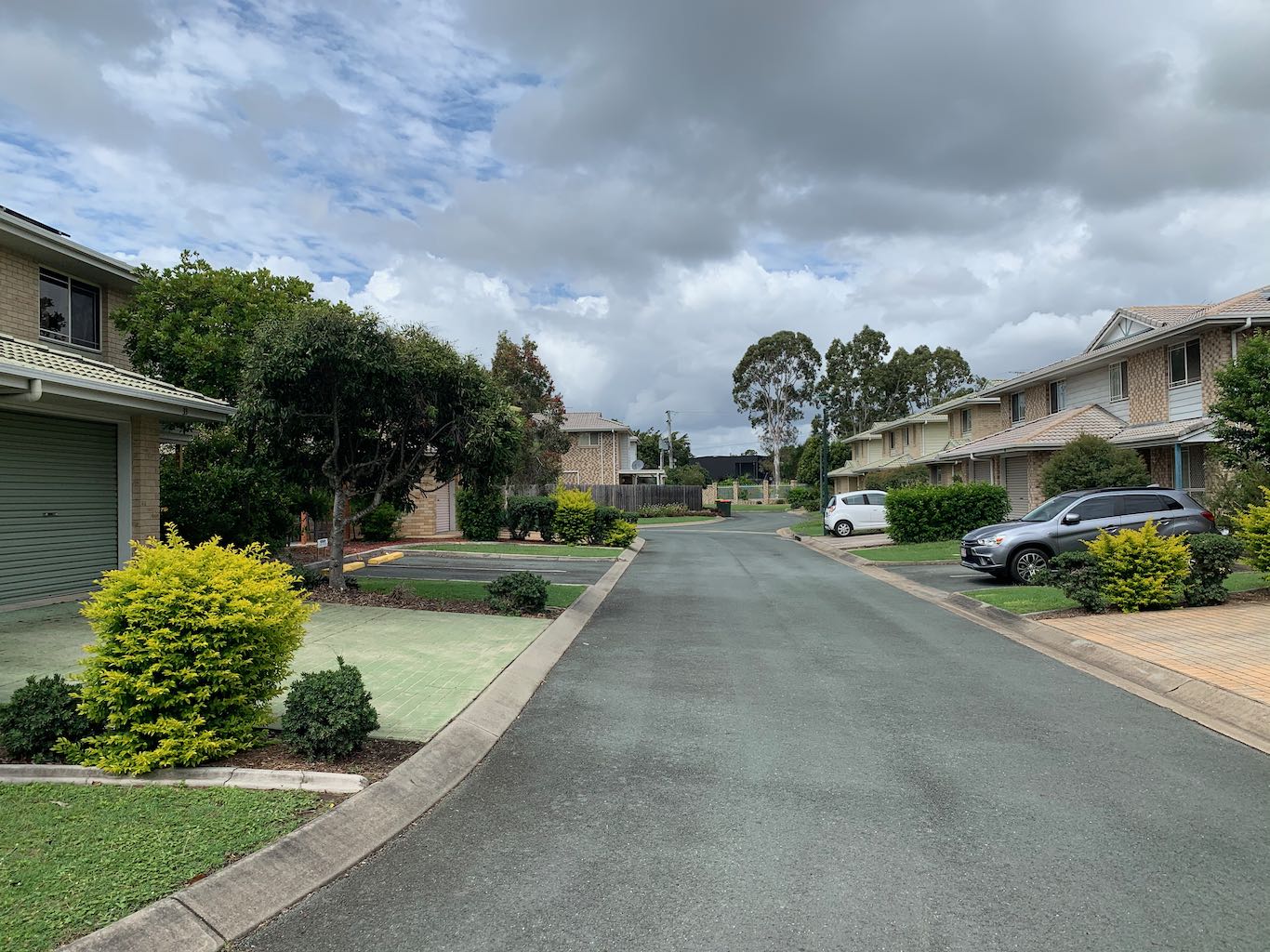
From my house to the fence. It's approximately 60 meters.
Statistics
Here are a series of links to runs on speedtest.net:
- 2020-03-10 15:26 - https://www.speedtest.net/result/9113549406
- 2020-03-11 06:37 - https://www.speedtest.net/my-result/i/3741990353
- 2020-03-11 23:00 - https://www.speedtest.net/my-result/i/3743122475
- 2021-08-28 12:15 - https://www.speedtest.net/result/11947616427
The sync speed information collected from my modem, as that’s a more objective indicator of the problem, ignoring RSP bandwidth contention etc:
{"up": 14.06, "down": 41.54, "timestamp": "2020-03-10 15:26:28.230983"}
{"up": 14.06, "down": 41.54, "timestamp": "2020-03-11 06:36:54.273848"}
{"up": 14.20, "down": 40.26, "timestamp": "2020-03-11 23:00:52.552787"}
The MDF is nearly 500m away on the main road and its location is the core of this problem, not the RSP’s bandwidth.
Stats from the most recent line test (straight from the source, NBN, via the pyaussiebb Python package I wrote!)
As the “attainable rate” is close to my sync rate, they won’t consider it a fault.
{
"completed_at": "2021-08-27T16:50:10Z",
"created_at": "2021-08-27T16:49:51Z",
"id": 4421139,
"output": {
"attainableRate": {
"downstream": 34533, "upstream": 14064
},
"currentSyncRate": {
"downstream": 36738, "upstream": 14431
},
"dslMode": "VDSL2",
"estimatedDistanceToNodeMeters": 980,
"loopAttenuationAverage": {
"downstream": 80.3,
"upstream": "N/A",
},
"noiseMarginAverage": {
"downstream": 4.9,
"upstream": 6.7,
},
"operationalStatus": "Up",
"physicalProfile": "50/20 Standard 6dB (Co-Existence)",
"serviceStability": "STABLE",
},
"result": "Passed",
"status": "Completed",
"type": "Line State",
"updated_at": "2021-08-27T16:50:10Z",
}
Clearly I need to restart the modem more often. I powered it off tonight for 30 seconds, turned it back on and was able to scrape a bit back:
{
"currentSyncRate": {"downstream": 41865, "upstream": 14496},
"attainableRate": {"downstream": 43444, "upstream": 14127}
}
Hardware I’ve used to test
I’ve replaced all the cabling in my house with a single run of cat6a that goes from the boundary point, up the outer wall, down through an internal wall to a high quality phone jack then into the modem. Connecting with linesman’s jacks to the boundary point, the closest I can get to the node shows the same result.
NBN technicians testing along the line confirm that it’s the line length and quality, not the internal wiring of my house.
Technicolor provided by Internode
- Product Vendor - Technicolor
- Product Name - TG789vac v3
- Software Version - 18.3
- Firmware Version - I-18.3.0157-3-3-0-CRF902
- Hardware Version - VBNT-1
The modem is running in bridge mode, but has been tested in both modes with no change to sync speed.
Huawei from Dodo
Huawei HG659, same cable etc. I couldn’t get any information about software version or MAC address out of it, the firmware had been locked down by the owners’ ISP.
- Upstream line rate (kbit/s): 11171
- Downstream line rate (kbit/s): 33613
- Maximum upstream rate (kbit/s): 11171
- Maximum downstream rate (kbit/s): 35998
- Upstream noise safety coefficient (dB): 5.9
- Downstream noise safety coefficient (dB): 7.3
- Upstream interleave depth: 0
- Downstream interleave depth: 0
- Line standard: VDSL
- Upstream line attenuation (dB): 43.5
- Downstream line attenuation (dB): 20.6
- Upstream output power (dBmV): 7.9
- Downstream output power (dBmV): 12
- Downstream interleave depth: None
Other questions I’ve been asked
Bleh.
- What is the length of the phone cable the modem is using? 1.5m
- Has a second phone cable been tested? Yes
- What is the length of the second phone cable? 1.5m
- How many phone sockets does this premises have? 1
- Have all phone sockets in the premises been tested? Yes
- Has an alternate modem been tested or has the modem been tested off-site? No and no
- Has a factory reset been performed? Yes